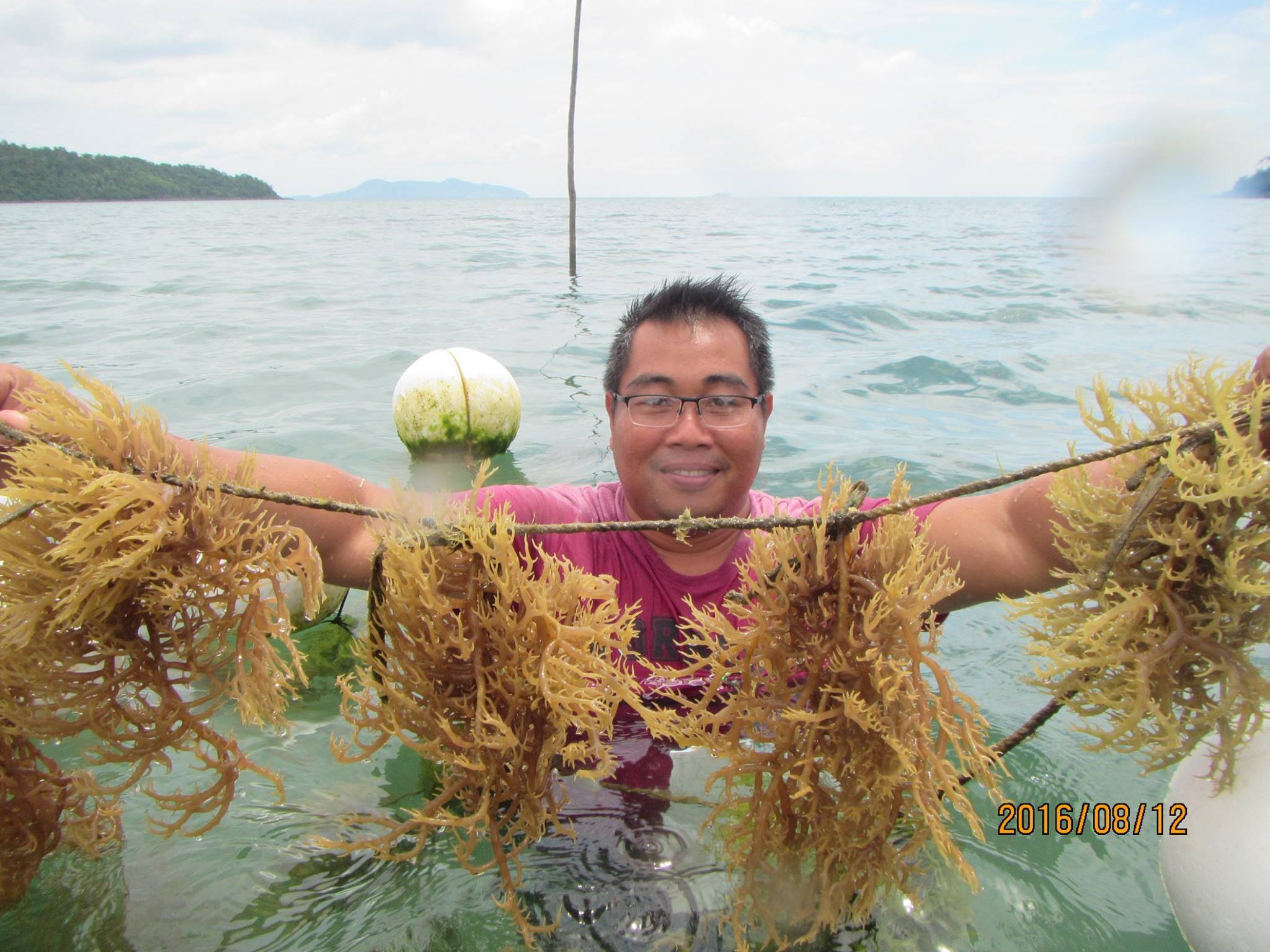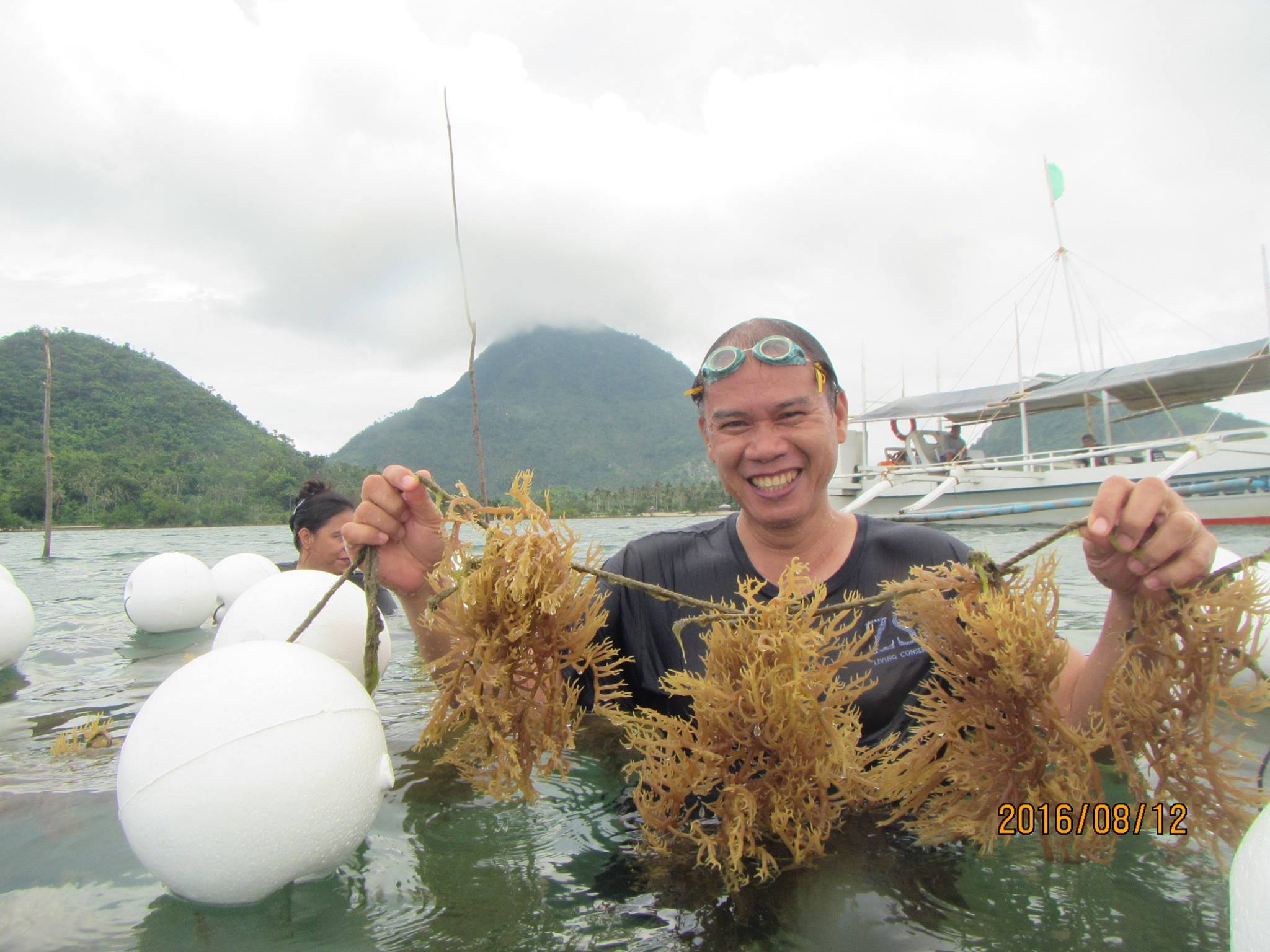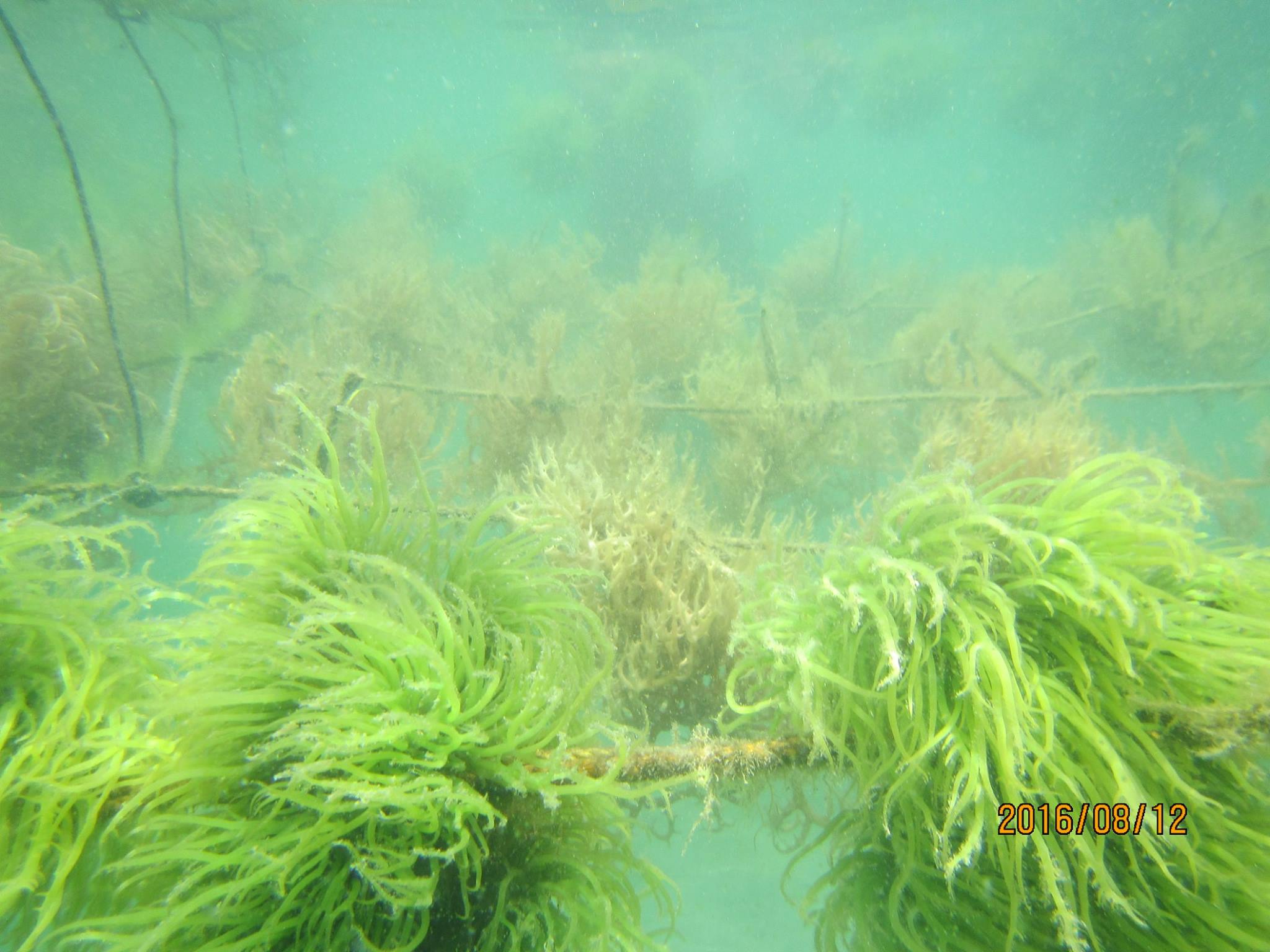As part of Net-Works, we’re helping communities find ways to diversify their livelihoods in order to avoid total reliance on fishing. The process of cultivating and harvesting seaweed has developed in the Philippines and throughout Asia as an accessible alternative for fishing communities.
Eucheuma, a red sea-plant native to Philippine marine waters, has been described as ‘the twentieth-century wonder plant’ and it’s derivative carrageenan is an incredibly useful substance used in many cosmetic, food and industrial products. As such, seaweed is a valuable export for the Philippines. Mindful cultivation of seaweed can provide the additional benefit of preserving marine diversity through the protection of coral reefs, generating homes and feeding grounds for local species of fish and invertebrates.
Some of the communities that we work with in areas such as Northern Iloilo have been trialling the viability of community seaweed farms with great success. These farms are a fantastic example of community-led conservation and enterprise in action.


Our team members from ZSL report back from visiting the farms, first hand:
“This is good news for all fishers. It means they don’t have to rely completely now on fishing. When the season is too rough to go out fishing, they are able to farm seaweed and it can help take care of family needs.” – Amado Blanco, Net-Works Philippines Project Manager, ZSL Philippines “How amazing! 52 days of untiring efforts in maintaining and monitoring the seaweed trial farms in Concepcion, Northern Iloilo. This marks the start of sustainable livelihoods for our Net-Works sites. I am very happy about this because now we can divert and ease the burden on the fishery industry by starting a new source of income.” – Smith Bajon, Net-Works Community Organiser, ZSL Philippines.
